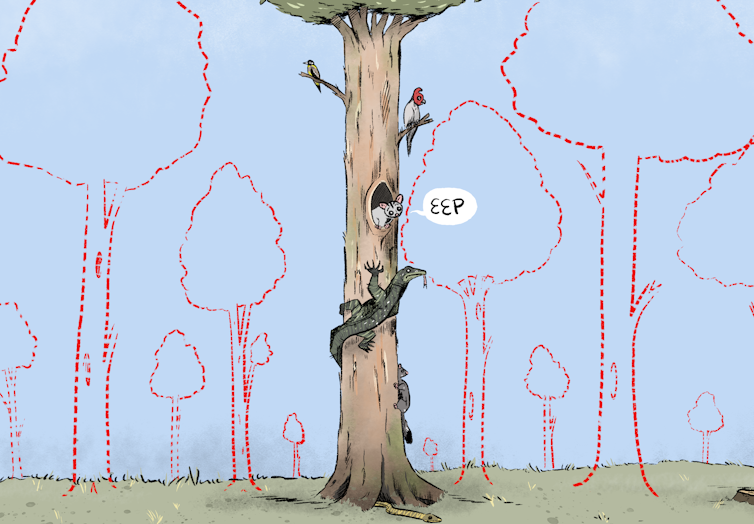Comic explainer: forest giants house thousands of animals (so why do we keep cutting them down?)

Madeleine De Gabriele, The Conversation and Wes Mountain, The Conversation
Giant eucalypts play an irreplaceable part in many of Australia’s ecosystems. These towering elders develop hollows, which make them nature’s high-rises, housing everything from endangered squirrel-gliders to lace monitors. Over 300 species of vertebrates in Australia depend on hollows in large old trees.
These “skyscraper trees” can take more than 190 years to grow big enough to play this nesting and denning role, yet developers are cutting them down at an astounding speed. In other places, such as Victoria’s Central Highlands Mountain Ash forests, the history of logging and fire mean that less than 1.2% of the original old-growth forest remains (that supports the highest density of large old hollow trees). And it’s not much better in other parts of our country.
David Lindenmayer explains how these trees form, the role they play – and how very hard they are to replace.
Read more:
Mountain ash has a regal presence: the tallest flowering plant in the world

Read more:
The plan to protect wildlife displaced by the Hume Highway has failed

Madeleine De Gabriele, Deputy Editor: Energy + Environment, The Conversation and Wes Mountain, Multimedia Editor, The Conversation
This article is republished from The Conversation under a Creative Commons license. Read the original article.
